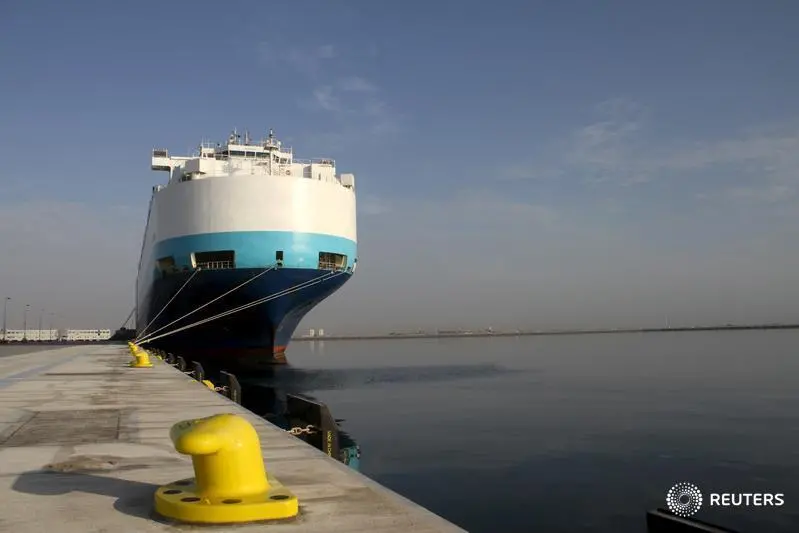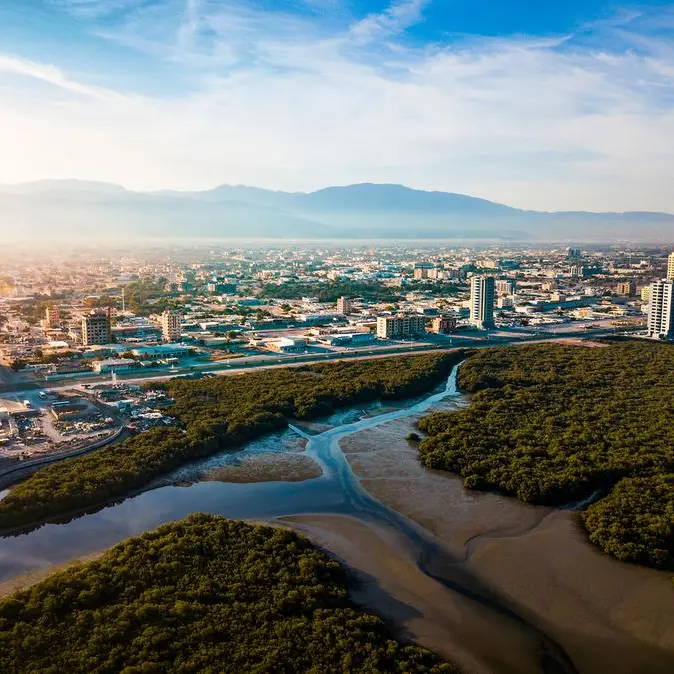PHOTO
Late 2015 marked a major step forward for the world's largest greenfield maritime development - Hamad Port, outside of Doha, where partial operations, including roll-on/roll-off, livestock and heavy equipment cargoes, began on December 24.
Trade winds
While this is welcome news to construction firms in particular, as it promises to end some of the current bottlenecks at the existing Doha Port, the new facility enters the field as global trade is easing.
The Baltic Dry Index, which measures the price of shipping bulk cargo around the world and is frequently used as a proxy for global trade growth, fell to a record low of 468 points in early January.
Competition between ports in the GCC region is also stiffening, as trade volumes come under pressure from the economic slowdowns in China, sluggish growth in Europe and growing uncertainties over the future of many large projects in the region.
To meet these challenges, Qatar will be looking to leverage Hamad Port's competitive advantages - including trans-shipment links to road, air and eventually rail - to reinforce its position as a key link in regional and international supply chains.
"The idea is not just to cater to the nearby markets of Iran or Saudi Arabia, but to act as the national port for Qatar, a regional port for the Gulf and a global port that serves the international market as a whole," Abdulla Al Khanji, CEO of the Qatar Ports Management Company (Mwani), told OBG.
Facts & figuresUpon completion, the QR27bn ($7.4bn) project, part of Qatar National Vision 2030, will be some 14 times the size of Doha Port. Spanning some 26.5 sq km, Hamad Port will have a general cargo terminal with a capacity of 1.7m tonnes per annum (tpa), as well as 1m-tpa grain facility, a vehicle terminal capable of handling 500,000 vehicles per year and a major livestock facility.
With a 3.8-km port basin and 17 metres of depth, Hamad Port's three container terminals will have a combined eventual capacity of 6m twenty-foot equivalent units (TEUs) per year.
Phased progressThe port was around 75% complete as of November, according to Mwani, and is on track to be fully operational by December 2016, by which point the port's handling capacity will reach 2m TEUs per annum.
Hamad Port will also take delivery of 11 workboats by end-2016, designed to provide marine support services for vessels using the port. The workboats are being built by Nakilat Damen Shipyards Qatar at its Ras Laffan facility.
All of the container port cranes have already been installed and are operational, including eight ship-to-shore (STS) cranes. The STS cranes will allow for a significant increase in movements per hour, from an average of 14 containers for a conventional crane to around 34.
The incorporation of STS cranes underscores a tenet of Hamad Port's broader strategy. By providing the latest equipment, the port is looking to create a higher degree of efficiency and learn from the shortcomings of other ports in the region.
Connectivity is another key strategic focus, enabling Hamad Port to serve as a regional logistics hub.
"Hamad Port is close to the recently opened Hamad International Airport and the industrial city of Mesaieed, and will be linked to Saudi Arabia via long-distance rail," Al Khanji told OBG. "It will also have a direct land connection to the Kingdom."
According to Abdulla bin Abdulaziz bin Turki Al Subaie, managing director of Qatar Rail, tenders for phase one of the long-distance rail will likely be released in 2016, with construction able to begin by the end of the year.
This, however, will require a high degree of coordination among GCC member states, as the construction schedules for each country will need to be integrated. The bloc is currently working towards an end-2018 deadline.
Port portfolioThe completion of Hamad Port will add a major extra card to Qatar's existing logistics offering. This includes the expanded Doha Port - where yard storage space has been expanded from 400,000 to 700,000 sq metres and total container handling capacity has risen to 750,000 TEUs - as well as the port of Al Ruwais. The latter opened in January 2015 and targets smaller feeder vessels for regional cargo.
The addition of Hamad Port will also allow Qatar to diversify its available services. "Once the port is fully operational, the existing Doha Port will be redeveloped into a cruise terminal, to be completed prior to 2022," Al Khanji told OBG. A master plan for the transformation is currently being developed.
These developments are set to reinforce Qatar's position as an international logistics player, with the strength of the local economy and the fast pace of development leading up to the 2022 FIFA World Cup providing a sound platform for expansion in the medium to long term.
Ultimately, however, much will depend on Hamad Port's ability to offer added value to logistics and transport companies, in comparison to regional peers such as Jebel Ali in Dubai and relative newcomers like Duqm and Sohar in Oman.
Al Khanji however, remains confident that Hamad Port will be a weighty competitor. "One of our main advantages is that we could learn from the experience of other mega-ports," he said. "In addition, we have huge land areas available around the port to further develop and expand as traffic increases."
© Oxford Business Group 2016












